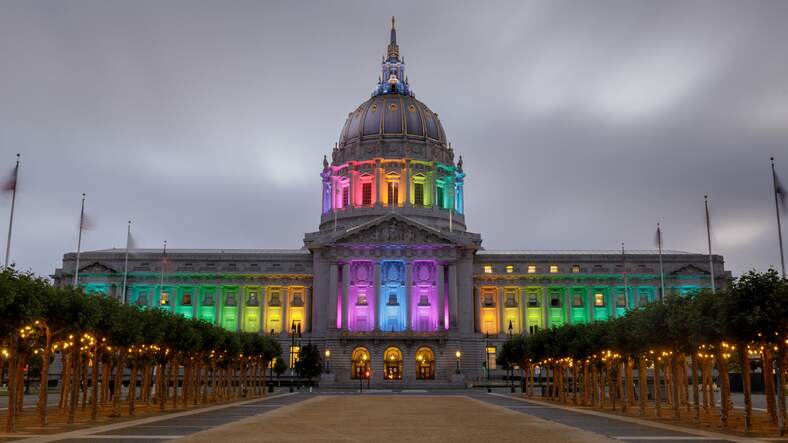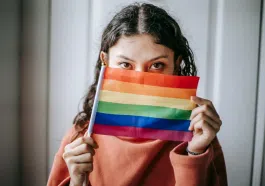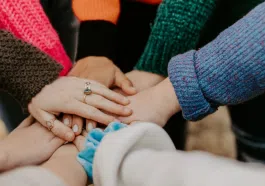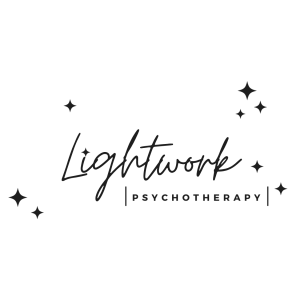Now that Pride Month is wrapping up, it is important to recognize and discuss the history of this significant event. Pride is celebrated every June as a tribute to the LGBTQ+ community, its history, and its struggles.
Pride Month is important because it commemorates the Stonewall riots in June 1969. The Stonewall Riots were a series of protests against police brutality and discrimination against the LGBTQ+ community in New York City. The Stonewall riots are recognized as a pivotal moment in the LGBTQ+ rights movement and a symbol of the community’s strength and resilience. Pride Month is a time to celebrate this strength and resilience and to recognize the progress made in the fight for equality.
This article will discuss the history of Pride Month, when the first Pride Parade occurred, and more.
History of Pride Month: About the Stonewall Riots
The Stonewall Riots were a turning point for the LGBTQ+ community. Before the riots, being gay, lesbian, or transgender was considered a mental disorder, and discrimination against the community was widespread.
However, the riots sparked a movement that led to the recognition of LGBTQ+ rights and the formation of organizations like the Gay Liberation Front and the Human Rights Campaign.
The Stonewall riots showed the world that the LGBTQ+ community would no longer accept discrimination and the mistreatment they had experienced for so long. It catalyzed change and began a new era where LGBTQ+ people could be visible and fight for their rights.
The Stonewall riots began in 1969 after a police raid on the Stonewall Inn, a popular gay bar in Greenwich Village in New York City. The bar patrons, many of whom were members of the LGBTQ+ community, fought back against the police, which sparked a series of violent protests that lasted several days.
Marsha P. Johnson and Sylvia Rivera
One of the key figures in the Stonewall riots was Marsha P. Johnson, a self-proclaimed drag queen and LGBTQ+ activist. Johnson and her fellow activists were credited with helping to spark the modern gay rights movement in the United States.
Marsha P. Johnson was joined in her efforts by fellow activist Sylvia Rivera, who was also an outspoken advocate for the rights of LGBTQ+ people. Rivera was a crucial figure in the Stonewall riots, and she was later credited with helping to found the Gay Liberation Front and Street Transvestite Action Revolutionaries (STAR).
History of Pride Month: When was the First Pride Parade?
The first Pride parade was held in New York City on June 28, 1970, to commemorate the first anniversary of the Stonewall riots. Thousands of people attended the parade, and it sparked similar events in other cities across the United States.
These events have grown in size and scope over the years, with Pride parades now held worldwide to celebrate LGBTQ+ rights and visibility. Millions of people attend Pride parades each year, making them some of the largest and most visible demonstrations of support for LGBTQ+ rights.
Pride parades have become a symbol of resilience and hope for LGBTQ+ people, showing that it is possible to come together and celebrate the progress toward equality. They also serve as a reminder to keep fighting for true acceptance and equal rights for all. Pride parades also provide a platform for LGBTQ+ individuals to share their stories, to be seen and heard, and to build community. They are a powerful reminder of the importance of visibility and solidarity.
What Does the Pride Flag Symbolize?
Over the years, Pride Month has become a global celebration of LGBTQ+ rights and culture. The rainbow flag, which was first designed by Gilbert Baker in 1978, has become a symbol of the LGBTQ+ community and is often seen during Pride Month celebrations.
Recently, the original rainbow flag has been supplemented with a newer, more intersectional pride flag. This flag, designed by Philadelphia-based artist Daniel Quasar, features black and brown stripes to represent people of color in the LGBTQ+ community and the pink, light blue, and white stripes of the original rainbow flag.
The pride flag is a symbol of inclusion and diversity and a sign of solidarity with the LGBTQ+ community. It is a reminder of the progress that has been made in the fight for LGBTQ+ rights and a celebration of the unique identities and experiences of queer people.
Why is There No Straight Pride?
Some straight and cisgender people have questioned why Pride is needed and why there is no straight Pride. Straight pride is unnecessary because being straight and cisgender is already widely accepted and celebrated in our society and is not considered an oppressed identity.
Furthermore, any attempt to create a “straight pride” movement would be seen as a rejection of LGBTQ+ rights and an attempt to erase queer people’s unique identities and experiences. Such a movement would ultimately harm LGBTQ+ individuals, as it would attempt to normalize being straight and cisgender and erase queer identities. It would also send a message that queer identities are something that should be ashamed of or hidden away.
Takeaway
Pride Month celebrates the progress that has been made in the fight for queer rights, but it is also a time to recognize that there is still work to be done. LGBTQ+ people still face discrimination and violence, and Pride Month serves as a reminder that the fight for equality must continue.
We must continue to fight for the rights of LGBTQ+ people and work to create a society free of prejudice and discrimination. We must also strive to create a world where everyone is treated with respect and dignity, regardless of gender or sexual identity.
Pride Month is an important celebration of the LGBTQ+ community and its history. It serves as a reminder of the struggles and progress made in the fight for equality and the recognition of LGBTQ+ rights. Furthermore, it allows people to come together and show their support. Pride Month is also a time for reflection and to recognize the work that still needs to be done to achieve true equality.
For more LGBTQ+ Lifestyle content, follow our blog and stay updated on relevant LGBTQ+ news.















